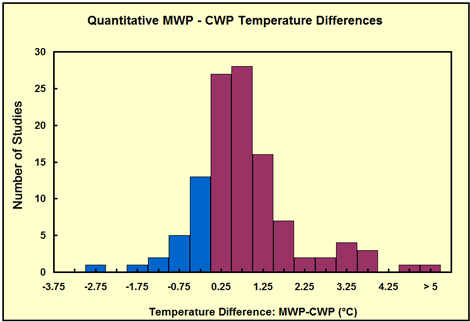Decline of West Coast Fog Brought Higher Coastal Temperatures Last 60 Years [what- not CO2?]
"In fact, climate models indicate that coastal fog should be increasing because of global warming"
ScienceDaily (Dec. 13, 2010) — Fog is a common feature along the West Coast during the summer, but a University of Washington scientist has found that summertime coastal fog has declined since 1950 while coastal temperatures have increased slightly.
Fog formation appears to be controlled by a high-pressure system normally present off the West Coast throughout the summer, said James Johnstone, a postdoctoral researcher with the Joint Institute for the Study of the Atmosphere and Ocean at the UW.
"The behavior of that high-pressure cell is responsible for a lot of the weather phenomena we see on the coast," he said. It can alter water temperature, ocean circulation, surface winds and other factors linked to coastal fog formation.
The fog decline could have negative effects on coastal forests that depend on cool and humid summers, but Johnstone, who presented his findings Dec. 13 at the American Geophysical Union annual meeting in San Francisco, hasn't seen evidence of that yet.
In fact, climate models indicate that coastal fog should be increasing because of global warming, but he believes that is not happening because of strong influence exerted by regional circulation patterns related to the Pacific Decadal Oscillation. That climate phenomenon, centered in the North Pacific, has wide-ranging effects that last for years or even decades rather than for just a year or two.
"You would eventually expect to see significant effects on the coastal forests if the fog continues to decline," he said.
Johnstone examined records from airports up and down the West Coast that have taken hourly readings on cloud height for the last 60 years. He looked closely at two stations in particular, Monterey on the central California coast and Arcata on the northern California coast, and found that their decline in fog and increase in temperature matched very closely despite being separated by about 300 miles. Both also reflected a great deal of variability.
"During a foggy summer you tend to have cool conditions along the coast and unusually warm temperatures in the interior," Johnstone said, adding that during less foggy summers coastal areas tend to be warmer than usual and the interior is cooler.
Historically there have been stark temperature differences at times between the coast and areas just a short ways inland. But the differences have been shrinking in recent years, mostly because of rising coastal temperatures, he said. Cooler temperatures typically are located near sea level, and the warmer inland temperatures begin to show up at about 1,300 feet in elevation.
Johnstone found that the contrast between inland and coastal temperatures was much greater from 1900 to 1930 than during the last 60 years, indicating that summers on the coast were much foggier in the early 20th century.
But he notes that while coastal fog has generally declined, the data in general have shown consistent variability. For example, the Pacific Northwest, and Seattle specifically, had record fog frequency in the summer of 2010, and many places along the West Coast recorded their foggiest summer since 1991.
A next step in his work will be to understand the discrepancy between climate models and actual fog observations so that the factors involved in summer fog formation can be better understood.
ScienceDaily (Nov. 25, 2010) — Conservationists have warned that carbon emission reduction strategies such as REDD may undermine, not enhance, long-term prospects for biodiversity conservation in the tropics.
Their warning comes only days ahead of the Cancun COP 16 climate change talks (Nov. 29 to Dec. 10, 2010).
REDD is a United Nations designed mechanism for carbon emission trading that provides financial compensation to developing countries for improved management and protection of their forest resources. If it works, REDD could strengthen the global fight against climate change, and create an opportunity for carbon-rich tropical countries to protect threatened biodiversity as a co-benefit of maintaining forests and the carbon they store.
Writing in the journal Carbon Balance and Management, a network of conservation scientists, including University of Kent's Dr Matthew Struebig, use data for Indonesia, a species-rich tropical country and the world's third largest source of carbon emissions, to highlight ways in which emission reduction strategies could turn sour for wildlife.











